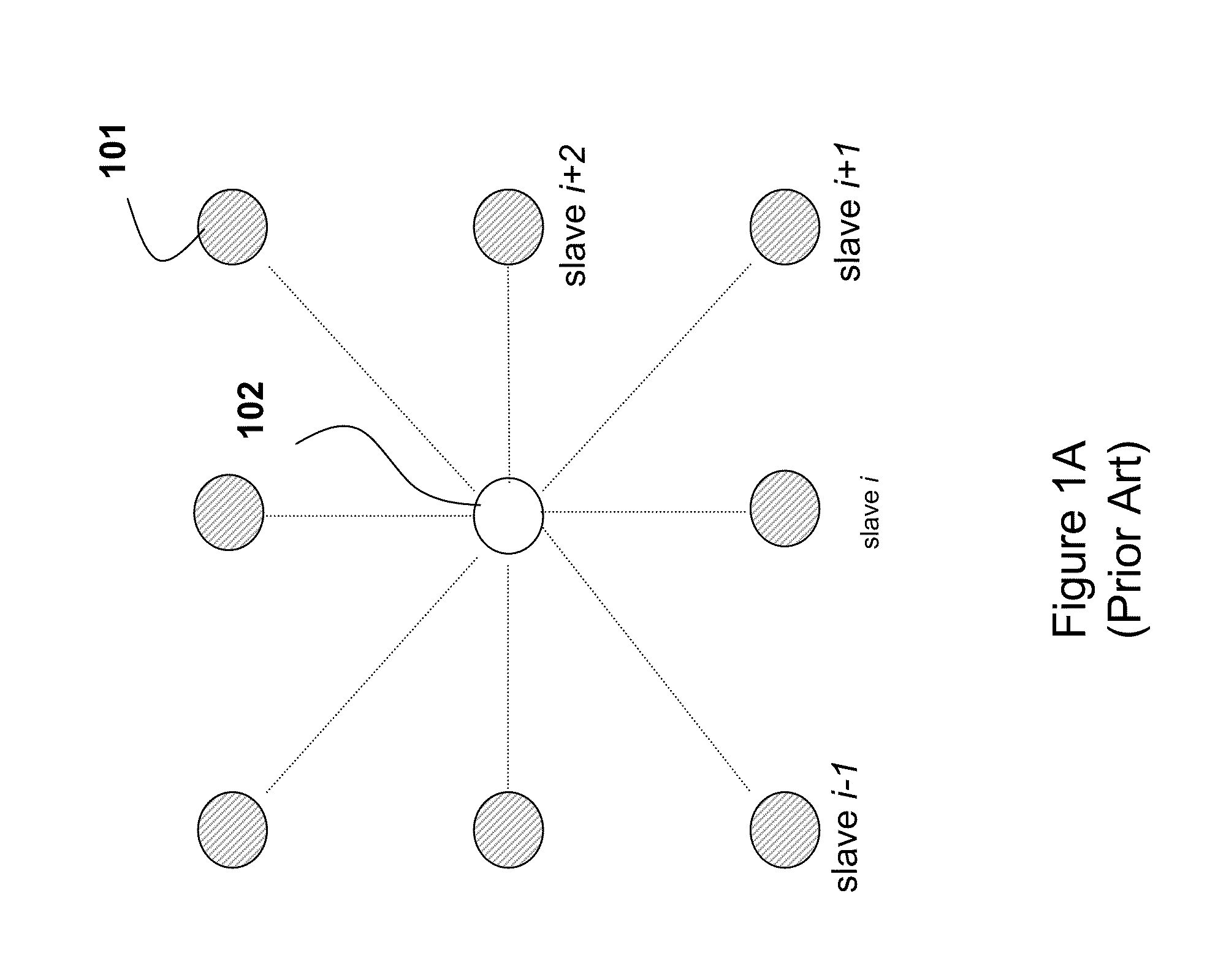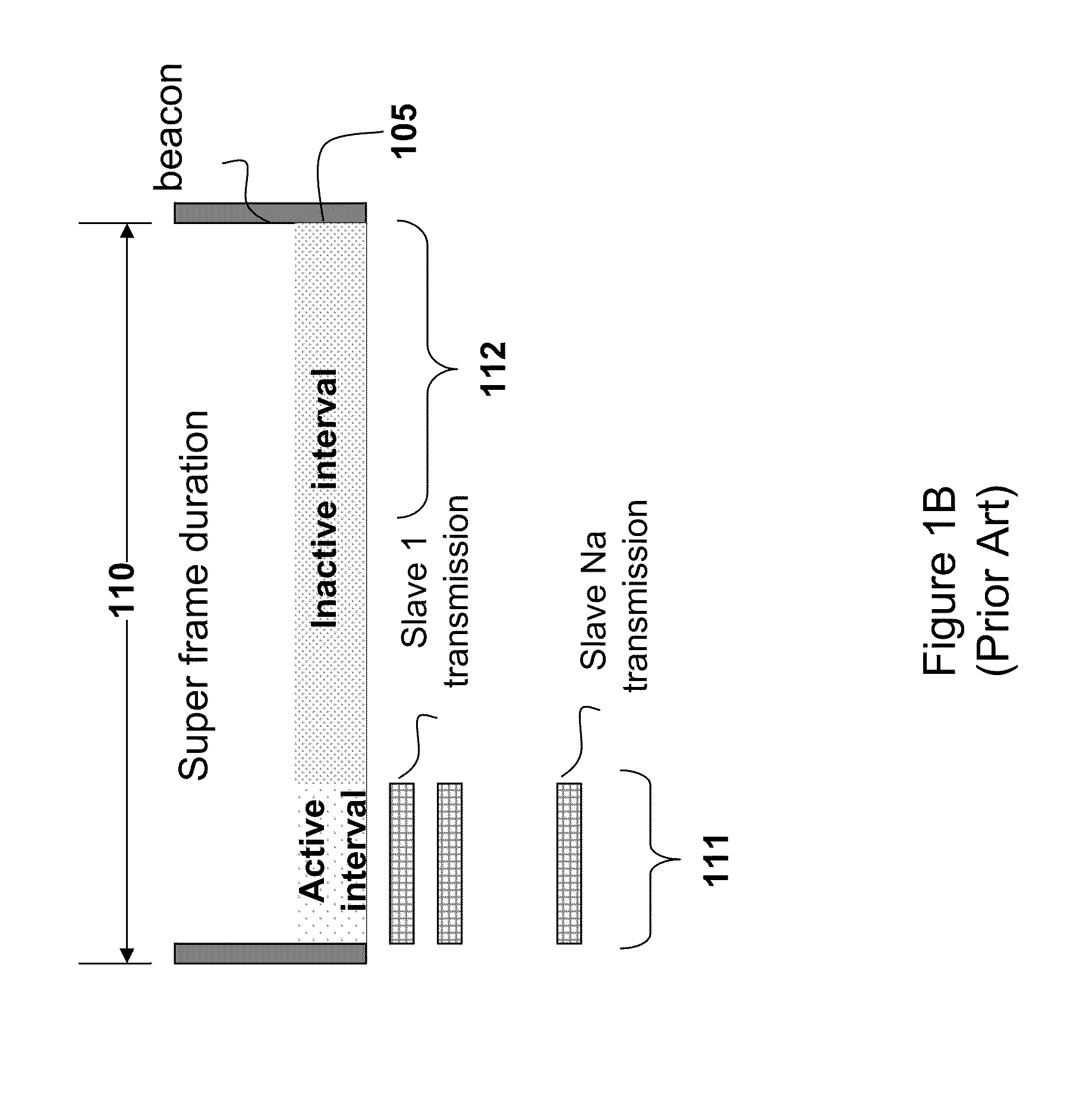Method and Network for Transmitting Data in a Wireless Network with Fixed Transmission Intervals
- Summary
- Abstract
- Description
- Claims
- Application Information
AI Technical Summary
Benefits of technology
Problems solved by technology
Method used
Image
Examples
Embodiment Construction
[0018]FIG. 2A shows a wireless star network according to embodiments of our invention. The network can be designed according to the IEEE 802.15.4 standards.
[0019]The network includes a set of N slave nodes (slaves) 201, and a master node (master) node 202. Average channel condition between slave i and the master is αi, m 203. The slaves can use time division multiple access (TDMA) that allows only a single slave node to transmit at a given time. Alternatively, the slaves can also use orthogonal frequency division multiple access (OFDMA), or code division multiple access (CDMA), which enables multiple, but perhaps not all, slaves to transmit their data to the master concurrently. It is understood that the data can be transmitted as packets. It is also understood that a combination of the aforementioned multiple access technology can be used, such as TDMA and OFDMA.
[0020]As shown in FIGS. 2B and 3B, the superframe intervals 210 is partitioned into an active interval T 211 and an inact...
PUM
 Login to View More
Login to View More Abstract
Description
Claims
Application Information
 Login to View More
Login to View More - Generate Ideas
- Intellectual Property
- Life Sciences
- Materials
- Tech Scout
- Unparalleled Data Quality
- Higher Quality Content
- 60% Fewer Hallucinations
Browse by: Latest US Patents, China's latest patents, Technical Efficacy Thesaurus, Application Domain, Technology Topic, Popular Technical Reports.
© 2025 PatSnap. All rights reserved.Legal|Privacy policy|Modern Slavery Act Transparency Statement|Sitemap|About US| Contact US: help@patsnap.com



